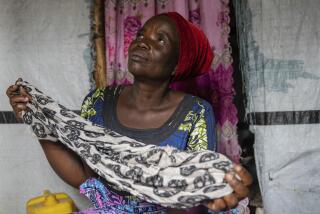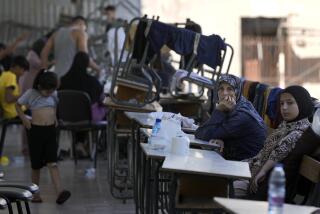Global Development: Worldwide, 1 in 110 people is displaced from home. Here’s what life is like for some of them
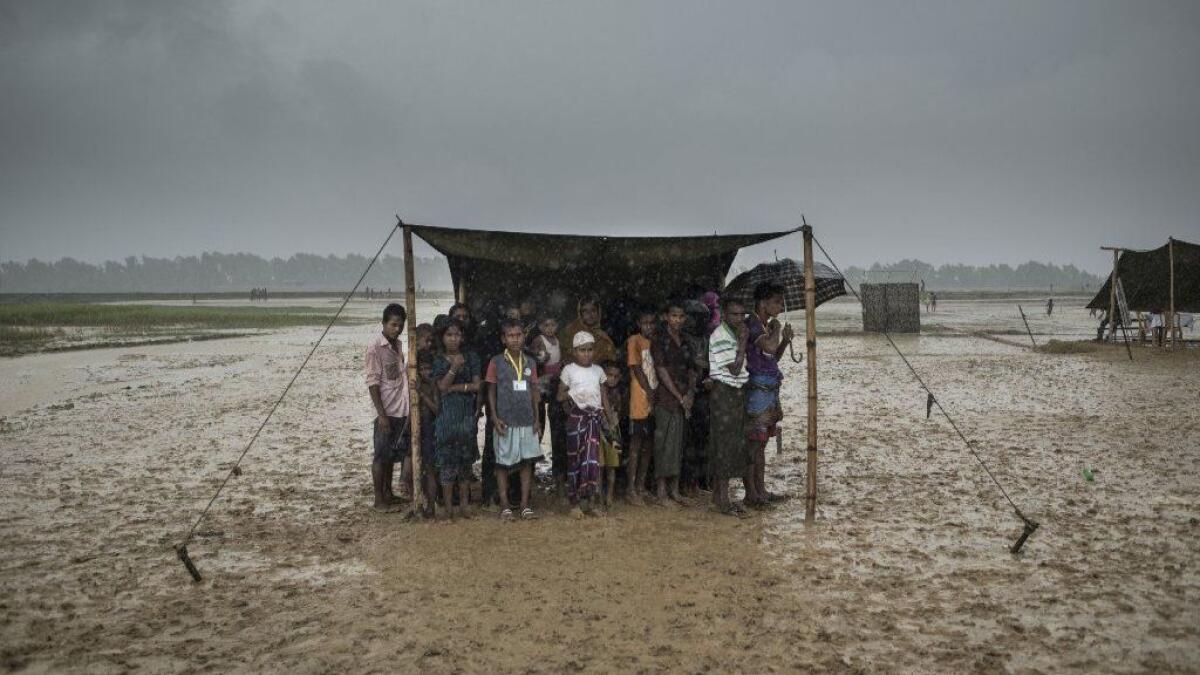
Reporting from Balukhali Refugee Camp, Bangladesh — Rising quietly before dawn inside his mud-walled shack, the fisherman said a quick prayer and set off into the woods to forage for firewood.
In a hut up the hill, a 12-year-old orphan lay on the dirt floor, his mind racked by memories of his parents.
In southern Bangladesh, hundreds of thousands of Rohingya Muslims who fled government attacks in Myanmar last year are crammed into the world’s largest refugee camp, unsure when or if they will be able to return to their homeland.
In this dreary limbo, they are far from alone.
At the end of 2017, war, violence, persecution and human rights violations had forced 68.5 million people from their homes worldwide — the highest number ever recorded, according to the United Nations.
With a global population of 7.6 billion, that means 1 in 110 human beings is forcibly displaced — their families torn apart, livelihoods destroyed, schooling interrupted, hopes for the future scattered to the wind.
The number of people who were refugees overseas or displaced inside their own countries has risen in each of the last six years, the U.N. refugee agency said in an annual report released Tuesday. The largest numbers at year’s end hailed from Syria, Colombia, the Democratic Republic of Congo, Afghanistan and South Sudan — all countries struggling with long-standing conflicts and political violence. (The lineup of the top countries producing refugees is slightly different.)
For people who left their home countries, the single largest increase in refugees came from Myanmar, where last August the army launched a ruthless crackdown against the Rohingya minority that some experts describe as genocide. (The government denies committing atrocities.)
More than 655,500 Rohingya fled to Bangladesh, most arriving in a span of 100 days, the U.N. said. Combined with others who had escaped persecution and previous rounds of state-backed violence, the camps now hold more than 930,000 Rohingya in a low-lying coastal zone the size of Washington, D.C., crisscrossed by migrating elephants and stalked by floodwaters and disease.
The Rohingya are effectively stateless — Myanmar having canceled their citizenship — and despite optimistic talk of repatriation plans are likely to be marooned here for the foreseeable future, dependent on food rations, water, basic education and medical care supplied by the international community at an estimated cost of $950 million this year alone.
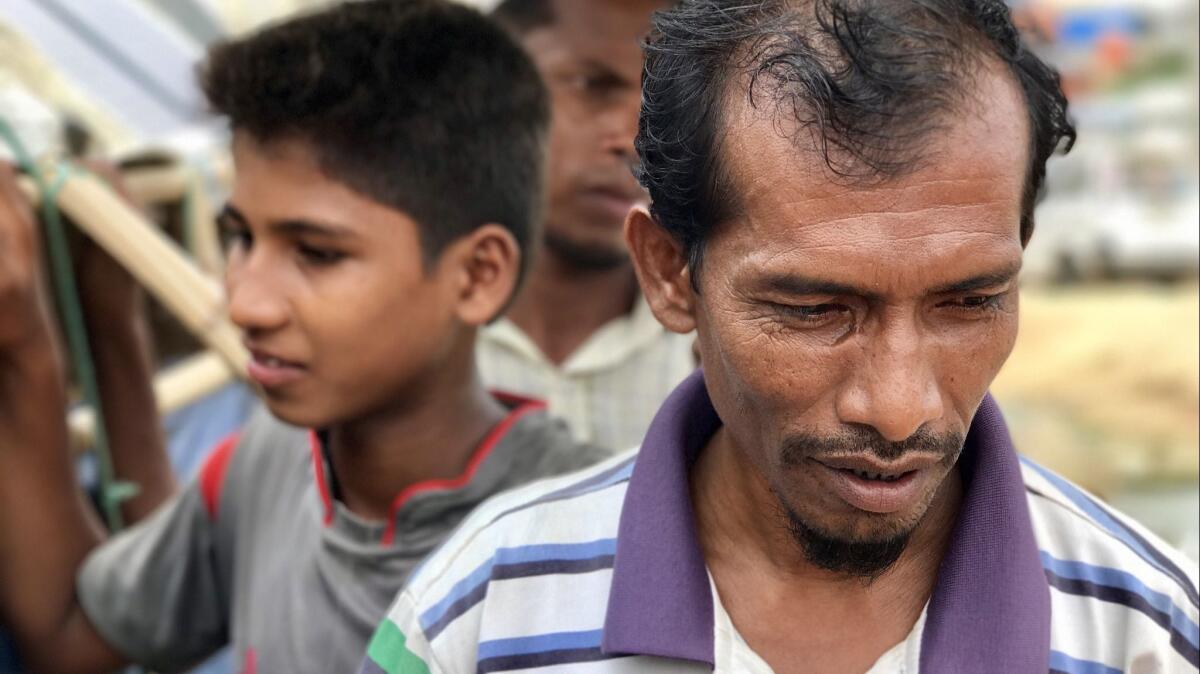
“In Myanmar I was able to donate seeds and rice to poor people,” said the fisherman, Mohammad Salim. “Here I am a beggar.”
Salim, a reedy 40-year-old with a wispy goatee, once had a fishing boat and earned enough money catching prawns to build a house of brick and concrete for his family of four in western Myanmar’s Maungdaw district. His wife, Fatima, mended clothes and cooked pungent curries with Salim’s leftover catches and red chilies she dried in the sun.
Soldiers burned their house when they attacked the village last year, Salim said. In their shack at the bottom of a hill in Balukhali refugee camp, a crude lattice of bamboo poles held up a roof made of cardboard strips and sheets of plastic.
But Fatima maintained the hut fastidiously. She had Salim embed a chipped, palm-sized mirror in the mud wall by the entrance so she could ensure her hair was properly covered when she stepped outside. Firewood was stacked in the corner above the red buckets where they kept their rations of rice, having learned the hard way that rats eat through the gunnysacks.
In the camp’s barter economy, refugees sell whatever handouts of rice or lentils they don’t want, then buy vegetables, fish or household goods supplied by Bangladeshi vendors. Most families cooked over smoky fires inside their huts, and Salim learned he could make some money scrounging wood from nearby forests.
He came home one recent afternoon wearing a crooked smile and holding a blue polyethylene bag. It was the middle of the fasting month of Ramadan, and for that night’s dinner he had bought a pound of fish for the first time.
“It is not like at home,” he said, examining one silvery, finger-length fish. A few pieces appeared spoiled. One day, he hoped, his wife would cook fresh catches again — but that was probably a long way off.
“God will show us the way,” he said. “If it’s written on our foreheads that we must stay here, we have no other option.”
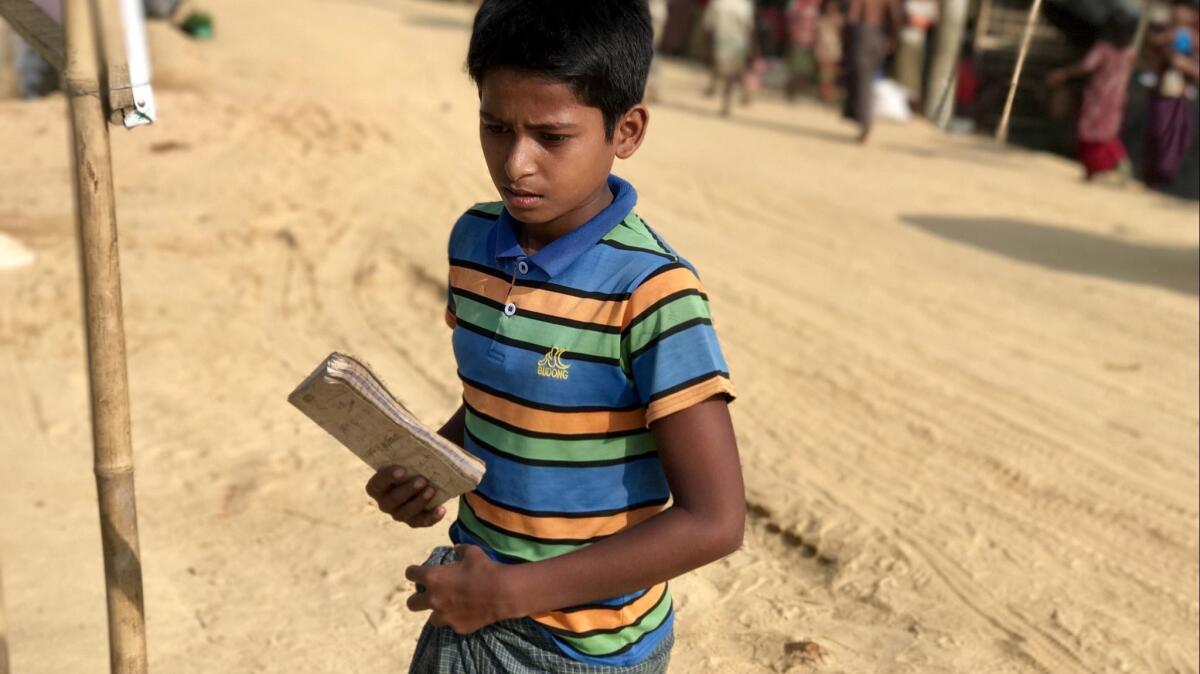
Aid agencies estimate that 55% of the Rohingya refugees are children, many having seen their parents killed or maimed as they fled Myanmar.
The youngest of five brothers, 12-year-old Mohammad Osman used to graze his family’s cattle, wading across the river that surrounded their village of Tula Toli. His parents were too poor to send him to school, so he busied himself with chores and learned to swim.
The morning that soldiers surrounded their village, he jumped into the river and paddled to the other side, taking refuge in a thicket of trees. He watched as the men in the village were shot, including his father and brothers, their bodies dumped into shallow graves on the riverbank, he said. He does not know what happened to his mother.
Mohammad Osman walked four days to reach Bangladesh and stayed with another family in Balukhali until his aunt and uncle, who had also managed to escape, heard his name announced over a loudspeaker by volunteers who were trying to reunite children with their relatives.
“They are my parents now,” the 12-year-old said.
Opportunities for children in the camps are scarce. With Bangladesh opposing formal schooling for the refugees, relief agencies run makeshift “learning centers” where teachers pass the time with drawing, games and nursery rhymes in English and Burmese.
“I see these kids running around the camp and hope they’ll be able to raise their own kids in better conditions,” said Marcella Kraay, project coordinator for Doctors Without Borders. “But my more realistic side says they’ll be raising kids in more or less the same conditions, which is a very sad thought.”
A 21-year-old teacher from Tula Toli, Mohammad Tayub, was tutoring children in the camp when an uncle told him about Mohammad Osman. Tayub found him kicking a torn soccer ball and told him to come at 6 a.m. the next day, before the other children showed up.
“I thought I should teach him one-on-one,” Tayub said. “If the children don’t study they will become aimless. The whole generation will be lost.”
One afternoon, after a few weeks of classes, Mohammad Osman tucked a tattered notebook into his waistband and walked up a muddy hill to Tayub’s hut. Sitting down on a plastic mat, he opened the notebook to a page of English letters and listened as Tayub recited them aloud. He was learning to read.
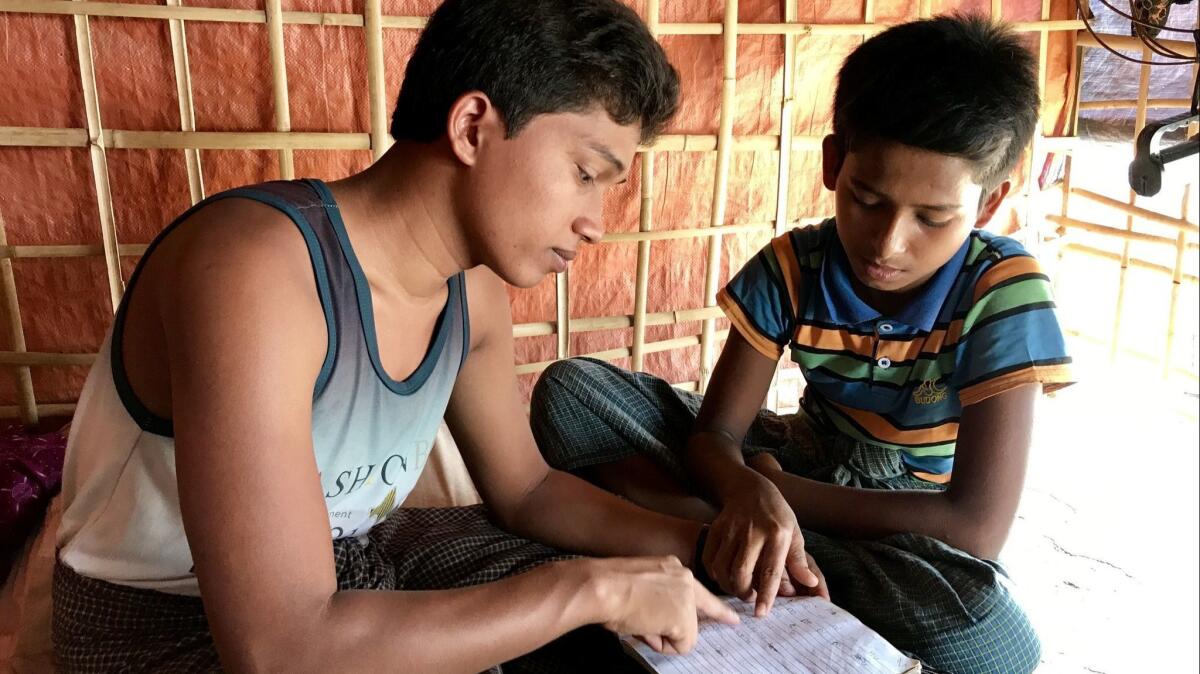
Shashank Bengali is South Asia correspondent for The Times. Follow him on Twitter at @SBengali
More to Read
Sign up for Essential California
The most important California stories and recommendations in your inbox every morning.
You may occasionally receive promotional content from the Los Angeles Times.

